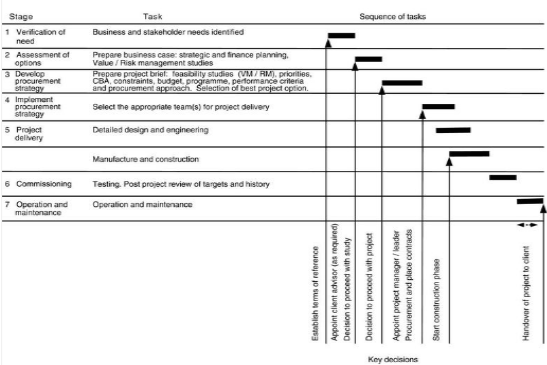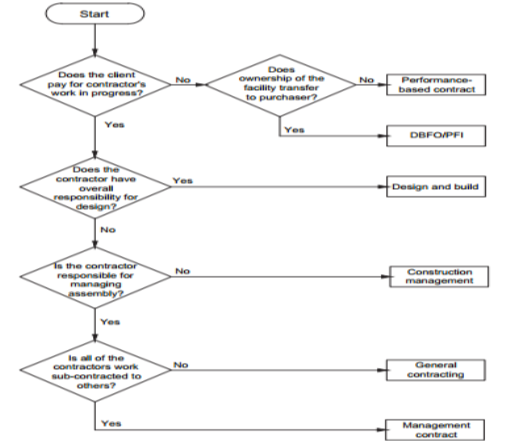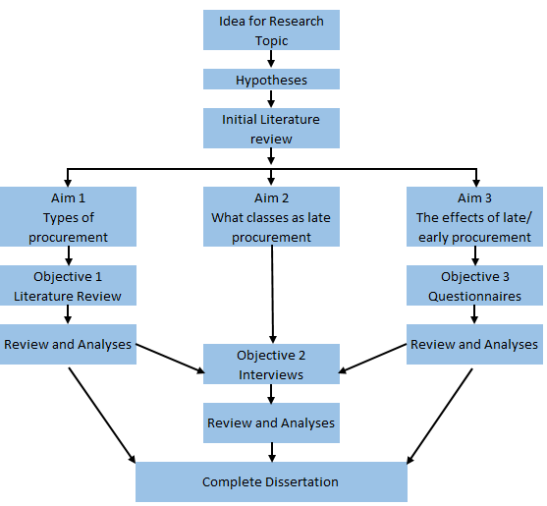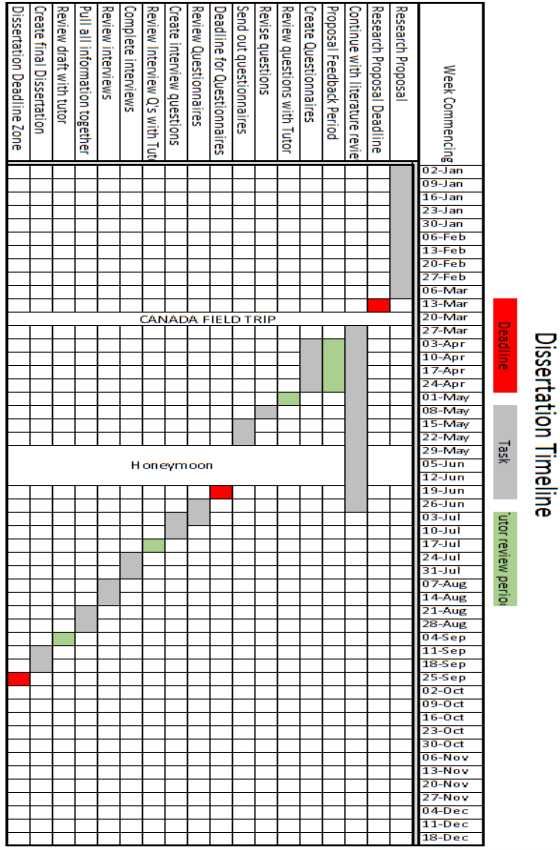Effects of Late Procurement for Specialist Subcontractors


1.1. Overview
This dissertation sets out to explore the various reasons why there are delays in the subcontractor procurement process in UK Construction Industry. The dissertation will be focusing on purely the private sector of the industry and determining what effects the late procurement can have on the project, both in terms of the commercial and programme implications.
The procurement process in construction begins with the client tendering the project to the main contractors. This dissertation will not focus on this element of the procurement process and will in turn focus purely on the procurement of the specialist subcontractor trades. A specialist subcontractor is defined as ‘a contractor appointed to carry out activities in the development of a built asset that involve specialist construction knowledge and skills’, (Specialist Sub-contractor, 2016)
The reason for this topic is due to the working environment in which the author current works, the author is a project manager in the glazing facade industry working on major projects in the UK construction industry. The issues surrounding late procurement has been disused both on sites and in the academic environment for many years and links have been made between the number of claims for delay and variations, and the pre-construction process (Mosey, 2009). Benefits of early procurement can include the ability to value engineer solutions, correct design co-ordination, review more sustainable solutions and many more.
1.2. Hypothesis
The research will demonstrate that late procurement can harm more than the programme on a project, it will show that late procurement can affect the design and quality of the project. The evidence will also show the negative effects that late procurement can have on the BREAM status of a building/ project and sustainability.
1.3. Null Hypothesis
Late procurement has no effect on the project in any way.
1.4. Aims
- To explore the various types of procurement in the private UK Construction Industry
- To determine what classes as late procurement and understand the main and most common reasons for late procurements
- To evaluate what are the benefits to late and early procurement in terms of the key project requirements;
- Time
- Quality
- Cost.
- BREAM/Sustainability
An additional aim to the dissertation, if sufficient time and resources are available.
- What can be done to improve the procurement processes
1.5. Objectives
- Read up on the various different procurement methods and strategies and understand which are relevant to the UK construction industry.
- Interview 4 to 5 individuals from different sectors of the UK construction industry.
- Speak to various levels of the construction industry project delivery team to understand the effects they believe early and late procurement can have on the industry. Questionnaires will be sent out to the following parties.
- Main Contractor Project Directors *
- Main Contractor Senior Procurement managers
- Main Contractor Senior Quantity Surveyors
- Main Contractor Project Managers / Package Managers *
- Main Contractor Site Managers
- Main Contractor Design Managers
- Architects *
- Specialist Sub-Contract Directors*
- Specialist Sub-Contract Project Managers*
* Indicates the various project members which interviews will be completed with.
2.1. Introduction
The initial literature review will explore the various documents which have been reviewed against each aim. This will highlight where there is a vast amount of literature available and where alternative options have had to be used, as set out in the objectives previously.
‘A literature review (also called ‘literature research study’ or literature survey’) groups relevant ideas and evidence from secondary sources into a logical flow, addressing significance and understanding.’ (Laycock, Howarth, & Watson, 2016)
2.2. The various stages of the procurement process
Before the procurement process can be understood the term procurement needs to be understood. Dr Denise Bower stated that ‘procurement is the term used to describe the overarching process of the identification, selection and acquisition of civil engineering services and materials, their transport, the execution or implementation; and subsequent project performance.’ (Bower, 2003).
As in any project, there are various elements which need to be procured, in construction these different elements tend to be larger and require sub-contractors to be procured on various different contracts to manage the design, supply and installation of the various elements. The acquisition of the various trade will be linked to the programme, the type of procurement and contract which is being used. One of the first thing which must be created is the Project Execution Plan (PEP), the PEP ‘sets out how the project which has been defined in the strategic brief will be procured’ (Morledge & Smith, 2013). The PEP is directly linked to the procurement approach which can be dictated by the constraints of the project or by the client.
As mentioned, the procurement process is directly linked to the programme, for both on and off site. The programme as a whole is linked to the construction process which is stipulated by British Standards BS 6079-1:2010, which is titled, Project management. Principles and guidelines for the management of projects. There are various different stages to the construction process and this is clearly depicted in Figure 1.

Figure 1typical stages of a Construction Project (Harris & McCaffer, 2013)
The British Standard for procurement policies, strategies and procedures are under BS 8532:2011. This document provides the backbone for the procurement division in the UK construction industry. The document states that it ‘gives recommendations and guidance on the development within a public or private sector organization of policies, strategies and procedures for the procurement of construction in the built environment.’ (British Standards Institution, 2011). Figure 2 portrays a decision structure for which forms of procurement should be used, the structure highlights the main frequently used forms of procurement in the construction sector.

Figure 2 Identifying the Procurement process (British Standards Institution, 2011)
2.3. What classes as late procurement
Late procurement in its simplest terms can be explained as when the procurement process chosen does not leave enough time to complete the programme to meet all three demands of the performance triangle as shown in Figure 3. Majority of specialist subcontractors packages are design and build. This means that if there is a delay in the procurement process it is the offsite period which is effected as the end date on a construction project rarely moves, unless the delay is due to the client.
Figure 3 The Performance triangle – Cost, Performance/Quality, time
A Design and Build contract is a ‘single source approach in the sense that, generally, the eventual contractor takes on single-point responsibility to develop the entire design and deliver the works according to the client’s requirement’ (Bower, 2003). A reduced design period makes design coordination between the different trades, especially in the specialist works, where the original intent by the client’s architect may not adhere to CDM and building regulation.
Late procurement in complex projects could be classed as a lot earlier than in the more standard buildings. A complex project can be classed as a project where it is not a standard structure or a repeated building such a chain hotel etc. Banwell’s report from 1964 stated that ‘specialist consultants, some of whom may infact also be specialist contractor, should be brought in at the earliest stage as full members of a design team’ (Banwell, 1964). Obviously the precise period when procurement can be classed as early and when it can be classed as late is debateable and will come down to a commercial decision from the main contractor.
2.4. The positive effects early procurement can have on a project
The discussion over the benefits of early procurement / contractor involvement has been discussed for over 50 years, Banwell report 1964. In 1998 the Egan report was publish and this was the turning point for the construction industry as he recommended a radical rethink, it was this report which lead to the creation of the Construction Industry Council (CIC). ‘The Construction Industry Council (CIC) is the representative forum for the professional bodies, research organisations and specialist business associations in the construction industry.’ (Construction Industry Council 2017, 2017)
David Mosey looked into this subject in a great deal, he stated that,’ a procurement model which omits contactor and specialist design contributions can increase risk and can result in poor communications between team members, unnecessary delays to progress of the project and the creation of incorrect information that leads to claims and disputes.’ (Mosey, 2009). This outlook is in line with many other academics, the JCT CE guide also states that, ‘It is important that contractors and any key specialists are engaged early, ideally at a stage when the proposed design is not complete so that it is possible for the contractor and key specialists to consider ways in which the design can be made easier to build and maintain’ (JCT CE Guide, 2006).
Design consultants are also in favour of this approach, the CIRIA (Construction Industry Research and Information Association) interviewed John Hayward, director of Mott MacDonald in 1998. He was quoted as stating ‘Our preferred approach, particularly on more complex projects, is to select the contractor who will construct the project at concept stage. The primary objective is optimise “buildability” and thus improve delivery against time and cost criteria’, (CIRIA, 1998).
By engaging contractors and specialist contractors at an early stage allows the creation of improved details which follow the build sequence as well as reduce build costs on site for re visits etc.
The early involvement approach reduces the focus on the client. The design and built contract ‘relies on the client expressing a clear performance brief at the outset and leaving the main contactor to determine its own means to complete the project in line with the required cost, time an quality parameters.’ (Mosey, 2009). The client would normally employ their own design team, architects etc, to generate this clear brief, by engaging a core team of specialist contractors this brief can be specifics and accurtate regarding specifications and details. This will reduce and remove some of the off-site time once a contractor is appointed as the brief should be transparent to both to contractor and the subcontractors tendering for the various packages.
3.1. Introduction
This chapter will discuss and evaluate the proposed methods which will be undertaken in the research of the dissertation. The different research methods have been carefully chosen by the author based on the title and topic environment.
3.2. Research Paradigms
A paradigm, in business, is ‘a model of something, or a very clear and typical example of something’ (Cambridge Dictionary, 2017).
Even though paradigms have increased through the raise in social media, there are still mainly two, Positivism and Anti-positivism. The third paradigm which will be considered in this research is critical theory. (Dr. Nirod K. Dash, June 2005)
Positivism, in philosophy, ‘adheres to the view that only “factual” knowledge gained through observation, including measurement, is trustworthy.’ (Dudovskiy, Positivism Research Philosophy, 2017) This is a very scientific approach and relies on fact and data rather than thoughts and opinions.
Anti-Positivism can also be referred to as interpretive sociology or interpretivist. This is when the researcher interprets the elements of the study and uses their own thoughts, opinions and believes in order to arrive at a conclusion. This method of study ‘usually focus on meaning and may employ multiple methods in order to reflect different aspects of the issue.’ (Dudovskiy, Interpretivism (interpretivist) Research Philosophy, 2017)
Critical theory suggests action research methods to explore the current field knowledge. This is generally used to solve problems immediately. This form of research will form from the back of the interviews when interviewing site level members of the project team.
Table 4 The three research paradigms and the various methods (Dr. Nirod K. Dash, June 2005)
|
Research paradigms |
Research approach |
Research methods |
Examples |
|
Positivism |
Quantitative |
|
|
|
Anti-positivism |
Qualitative |
|
|
|
Critical theory |
Critical and action-oriented |
|
|
3.3. Data Collection
Various different types of data will be collected from the different research methods that have been proposed above. These different methods where chosen in order to gain an increased understanding of the industry as a whole, not just from an academic or site level. The different methods will also allow a large amount of different data to be collected, analysed and reviewed.
Positivism research will lead to primary data through the surveys and questionnaires.
3.4. Methods
3.4.1. Objective 1
In order to explore the various types of procurement in the private UK Construction Industry the author will complete an extensive literature review. This review will examine the data from research which has been complete by other academics, this will secondary data. Secondary data will be reviewed as this will provide an alternative opinion on the current and past industry. A wide range of opinions will be critical when reviewing the primary data which will be collected from interviews and questionnaires
The emphasis of this objective is also to evaluate how much change has happened in the procurement practise to see if the role of a specialist subcontract has been considered when developing the process. In order to understand this the interview with the Main Contractor Procurement leaders will help explain from a practical level whether the theory mentioned in the literature review is completed in the field.
The only issue with this method of research is that the academic literature may be one sided or based on past practice and not reflective of the current UK construction industry.
3.4.2. Objective 2
Determining what classes as late procurement and understanding the main and most common reasons for late procurements will be achieved through primary data, the data will be collected by different members of the UK construction industry completing interviews. In order to achieve a rounded and diverse set of responses the author will also aim to interview difference companies in the same sector.
The interview questions will be created following an extensive literature review and a review of the questionnaires. The interview questions will contain the same core questions for each sector in order to achieve a broad understanding of the different opinions of late procurement. There will be different role specific questions which will be directed towards the environment that each interviewee works in.
3.4.3. Objective 3
Exploring the perception of late/early procurement and what effects it has on the construction industry will be the hardest objective to complete. The author will create various surveys aimed at different disciplines to understand the different effects and issues caused by the delay in procurement.
The questionnaires for the procurement team will try to gain an understanding into the procurement procedure they follow and whether it is by personal choice, company procedure or effected by time critical requirements.
The questionnaires will be sent to colleagues in the authors working environment which will then be passed on to their colleagues, this is referred to as snowball sampling. This method has many benefits including;
- Reaching members of the construction industry in high positions which would have been previously unachievable.
- Saving time, as other people are sending the questionnaire around the various other individuals
- No large scale pre planning required, the author will just have to speak to the various key members about the request.
However, there are also some disadvantages to this technique;
- Lack of control over who takes part in the survey
- Sampling bias as the initial subjects will pass the questionnaire onto their close colleague who may be in similar positions or have the similar options. (Explorable, 2017)
3.5. Research model
The model displayed below highlights the various stages which will be completed during the research stage of the project.
The first 3 stages have already been completed, along with the definition of the aims. The next stage is to complete the objectives and then review and analyse the data collected.

Figure 4 A flow chart depicting the dissertation process
3.6. Gantt chart displaying target project dates
Table 6, Gantt chart displaying the target dissertation timeline

In summary the author has shown that there has been previous research into the proposed topic, however this research has been into the various procurement strategies and the benefits of early contractor involvement. There has not been much research into the effects of late procurement or the reasons for late procurement. This is where data from the interviews and questionnaires will be harnessed.
The methodology clearly portrays that the results from the questionnaire and literature review will be used to create the interview questions. This method will allow any gaps in information to be capture in the interviews, it will also allow some of the more challenging questions to be clearly answered by the interviewee.
The main challenge that the author will face is participation with members of the industry for the questionnaires and interviews. The benefit of working in the industry and on major construction site is that the author will have personal links to various members on the industry, this should aid in the response rate.
Banwell. (1964). Banwell Report – The Placing and Management of Contacts for building and Civil Engineering Work. London: HMSO.
Bower, D. D. (2003). Management of Procurement. London: Thomas Yelford Publishing.
British Standards Institution. (2011). BS 8534:2011 – Construction procurement policies, strategies and procedures. BSI Standards Publications.
Cambridge Dictionary. (2017, March 01). Paradigm. Retrieved from Cambridge Dictionary: http://dictionary.cambridge.org/dictionary/english/paradigm
CIRIA. (1998). Selecting Contractors by Value. London: Construction Industry Research and Information Association.
Construction Industry Council 2017. (2017, March 7). Retrieved from Construction Industry Council: http://cic.org.uk/
Dr. Nirod K. Dash, I. (June 2005). Module: Selection of the Research Paradigm and Methodology. Manchester Meropolitan University.
Dudovskiy, J. (2017, Feb 28). Interpretivism (interpretivist) Research Philosophy. Retrieved from Research Methodology: http://research-methodology.net/research-philosophy/interpretivism/
Dudovskiy, J. (2017, March 01). Positivism Research Philosophy. Retrieved from Research Methodology: http://research-methodology.net/research-philosophy/positivism/
Explorable. (2017, March 05). Snowball Sampling. Retrieved from Explorable: https://explorable.com/snowball-sampling
Harris, F., & McCaffer, R. (2013). Modern Construction Management. Chichester: Wiley-Blackwell.
JCT CE Guide. (2006). JCT – Constructing Excellence Contract Guide. London: Sweet & Maxwell.
Laycock, E., Howarth, T., & Watson, P. (2016). The Journey to Dissertation Success. Oxon: Routledge.
Morledge, R., & Smith, A. (2013). Building Procurment. Chichester: Wiley-Blackwell.
Mosey, D. (2009). Early Contractor Involvement in Building Procurement- Contracts, Partnering and Project Managment. Wiley – Blackwell.
Specialist Sub-contractor. (2016, Jan 21). Retrieved from Designing Building Wiki: https://www.designingbuildings.co.uk/wiki/Specialist_contractor
Please find attached at the end of the report the following documents
6.1 Research Ethics Checklist for Students (Page 19 to 25)
6.2 Participant Information Document (Page 26 to 27)
6.3 Participant Consent Form (Page 28 to 29)
RESEARCH ETHICSCHECKLIST FOR STUDENTS (SHUREC7)
This form is designed to help students and their supervisors to complete an ethical scrutiny of proposed research. The SHU ResearchEthicsPolicy should be consulted before completing the form.
Answering the questions below will help you decide whether your proposed research requires ethical review by a Designated Research Ethics Working Group.
The final responsibility for ensuring that ethical research practices are followed rests with the supervisor for student research.
Note that students and staff are responsible for making suitable arrangements for keeping data secure and, if relevant, for keeping the identity of participants anonymous. They are also responsible for following SHU guidelines about data encryption and research data management.
The form also enables the University and Faculty to keep a record confirming that research conducted has been subjected to ethical scrutiny.
For student projects, the form may be completed by the student and the supervisor and/or module leader (as applicable). In all cases, it should be counter-signed by the supervisor and/or module leader, and kept as a record showing that ethical scrutiny has occurred. Students should retain a copy for inclusion in their research projects, and staff should keep a copy in the student file.
Please note if it may be necessary to conduct a health and safety risk assessment for the proposed research. Further information can be obtained from the Faculty Safety Co-ordinator.
GeneralDetails
|
Name of student |
Katherine Louise Walter |
|
|
SHU email address |
||
|
Course or qualification (student) |
MSc Construction Project Managements |
|
|
Name of supervisor |
PhaikSan Liew |
|
|
email address |
||
|
Title of proposed research |
The effects of late procurement for specialist subcontractors in the Uk Construction Industry |
|
|
Proposed start date |
January 2017 |
|
|
Proposed end date |
October 2017 |
|
|
Brief outline of research to include, rationale & aims (250-500 words). |
This dissertation sets out to explore the various reasons why there are delays in the subcontractor procurement process in UK Construction industry. The dissertation will be focusing on purely the private sector of the industry and determining what effects the late procurement can have on the project, both in terms of the commercial and program implications. The main aims of the dissertation are; 1.To explore the various types of procurement in the private UK Construction Industry 2.To determine what classes as late procurement and understand the main and most common reasons for late procurements 3.To evaluate what are the major effects on late procurement and do they aid or hamper the three key feature of a successful project a) Time b) Quality c) Cost. d) BREAM/Sustainability 4.What can be done to improve the procurement processes |
|
|
Where data is collected from individuals, outline the nature of data, details of anonymisation, storage and disposal procedures if required (250-500 words). |
Data will be collected from individuals in the construction sector via interviews and questionnaires. The nature of the data will be both opinions and facts. The opinions will be taken from various sectors of the construction industry in order to gain a wide range of data. The questionnaires will also be sent to various different employees for different companies. This approach will try to avoid results being effected by one companies practice. The data received from the questionnaires will then be used to generate questions for interviews. These interviews will try to focus down into some of the trends displayed in the questionnaires. The interview will also ask questions about the company procedures as well as the individuals’ thoughts and opinions on how the system could be improved. |
|
1.HealthRelated Research InvolvingtheNHSorSocial Care/ CommunityCareorthe
Criminal JusticeServiceorwith researchparticipantsunabletoprovideinformedconsent
|
Question |
Yes/No |
|
1. Does the research involve?
patients
|
No No No No No No No No |
|
2.Is this a research project as opposed to service evaluation or audit? ForNHS definitionspleaseseethefollowingwebsite http://www.hra.nhs.uk/documents/2013/09/defining-research.pdf |
No |
2.ResearchwithHumanParticipants
|
Question |
Yes/No |
|
|
Does the research involve human participants? This includes surveys, questionnaires, observing behaviour etc. |
Yes |
|
|
Question |
Yes/No |
|
If NO,pleasegotoSection3 |
||
Note: Vulnerable‘peopleinclude children and youngpeople,peoplewithlearning disabilities,people whomaybelimitedbyageor sickness,etc. See definition on website |
No |
|
intrusive or potentially harmful procedures of any kind? |
No |
|
|
No |
|
|
No |
|
|
No |
|
Note: Harm maybecausedbydistressingorintrusiveinterviewquestions, uncomfortableproceduresinvolving theparticipant, invasionof privacy, topics relating tohighlypersonal information, topicsrelating toillegal activity, etc. |
No |
|
|
No |
|
Note: ‘Covert research’refers to researchthat isconductedwithout theknowledge ofparticipants. |
No |
|
|
No |
|
3.Researchin Organisations
|
Question |
Yes/No |
|
No |
If YES,studentspleaseshow evidencetoyour supervisor. PI shouldretain safely. |
|
Note: You will onlybeable to start theresearchwhen youhavebeengranted access. |
4.ResearchwithProductsandArtefacts
|
Question |
Yes/No |
|
1. Will the research involve working with copyrighted documents, films, broadcasts, photographs, artworks, designs, products, programmes, databases, networks, processes, existing datasets or secure data? |
No |
|
2. If you answered YES to question 1, are the materials you intend to use in the public domain? Notes: ‘In thepublicdomain’doesnot meanthesamethingas‘publiclyaccessible‘.
If youansweredYEStoquestion1, beawarethatyoumayneedtoconsider other ethicscodes.Forexample, whenconducting Internet research, consult thecodeof theAssociationof InternetResearchers; foreducational research, consult theCodeof Ethicsof theBritishEducational Research Association. |
|
|
3. If you answered NO to question 2, do you have explicit permission to use these materials as data? If YES,pleaseshowevidence toyour supervisor. |
|
|
4. If you answered NO to question 3, is it because: A. you have not yet asked permission B. you have asked and not yet received and answer C. you have asked and been refused access. NoteYou will onlybeable to start theresearchwhen youhavebeengranted permissiontousethespecified material. |
A/B/C |
Adherence toSHU policyandprocedures
|
Personalstatement |
|
|
I can confirm that: I have read the Sheffield Hallam University Research Ethics Policy and Procedures I agree to abide by its principles. |
|
|
Student |
|
|
Name: Katie Walter |
Date: 11/03/17 |
|
|
|
|
Supervisororotherpersongivingethicals |
|

 Signature:
Signature: